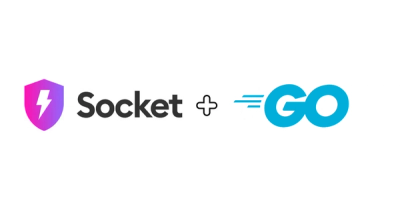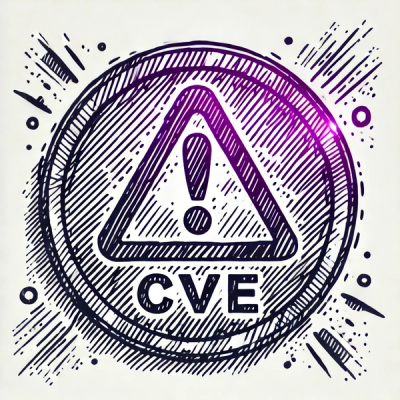
Product
Go Support Is Now Generally Available
Socket's Go support is now generally available, bringing automatic scanning and deep code analysis to all users with Go projects.
github.com/subhambhardwaj/go-test-coverage/v2
go-test-coverage is a tool designed to report issues when test coverage falls below a specified threshold, ensuring higher code quality and preventing regressions in test coverage over time.
Here are the key features and benefits:
You can use go-test-coverage in two ways:
It’s recommended to utilize both options for Go projects.
Here’s an example Makefile with a check-coverage command that runs go-test-coverage locally:
GOBIN ?= $$(go env GOPATH)/bin
.PHONY: install-go-test-coverage
install-go-test-coverage:
go install github.com/subhambhardwaj/go-test-coverage/v2@latest
.PHONY: check-coverage
check-coverage: install-go-test-coverage
go test ./... -coverprofile=./cover.out -covermode=atomic -coverpkg=./...
${GOBIN}/go-test-coverage --config=./.testcoverage.yml
Here’s an example of how to integrate go-test-coverage into a GitHub Actions workflow:
name: Go test coverage check
runs-on: ubuntu-latest
steps:
- uses: actions/checkout@v3
- uses: actions/setup-go@v3
- name: generate test coverage
run: go test ./... -coverprofile=./cover.out -covermode=atomic -coverpkg=./...
- name: check test coverage
uses: vladopajic/go-test-coverage@v2
with:
config: ./.testcoverage.yml
For detailed information about the GitHub Action, check out this page.
Here’s an example .testcoverage.yml configuration file:
# (mandatory)
# Path to coverage profile file (output of `go test -coverprofile` command).
#
# For cases where there are many coverage profiles, such as when running
# unit tests and integration tests separately, you can combine all those
# profiles into one. In this case, the profile should have a comma-separated list
# of profile files, e.g., 'cover_unit.out,cover_integration.out'.
profile: cover.out
# (optional; but recommended to set)
# When specified reported file paths will not contain local prefix in the output.
local-prefix: "github.com/org/project"
# Holds coverage thresholds percentages, values should be in range [0-100].
threshold:
# (optional; default 0)
# Minimum coverage percentage required for individual files.
file: 70
# (optional; default 0)
# Minimum coverage percentage required for each package.
package: 80
# (optional; default 0)
# Minimum overall project coverage percentage required.
total: 95
# Holds regexp rules which will override thresholds for matched files or packages
# using their paths.
#
# First rule from this list that matches file or package is going to apply
# new threshold to it. If project has multiple rules that match same path,
# override rules should be listed in order from specific to more general rules.
override:
# Increase coverage threshold to 100% for `foo` package
# (default is 80, as configured above in this example).
- path: ^pkg/lib/foo$
threshold: 100
# Holds regexp rules which will exclude matched files or packages
# from coverage statistics.
exclude:
# Exclude files or packages matching their paths
paths:
- \.pb\.go$ # excludes all protobuf generated files
- ^pkg/bar # exclude package `pkg/bar`
# File name of go-test-coverage breakdown file, which can be used to
# analyze coverage difference.
breakdown-file-name: ''
diff:
# File name of go-test-coverage breakdown file which will be used to
# report coverage difference.
base-breakdown-file-name: ''
For cases where there is a code block that does not need to be tested, it can be ignored from coverage statistics by adding the comment // coverage-ignore at the start line of the statement body (right after {).
...
result, err := foo()
if err != nil { // coverage-ignore
return err
}
...
Similarly, the entire function can be excluded from coverage statistics when a comment is found at the start line of the function body (right after {).
func bar() { // coverage-ignore
...
}
You can easily generate a stylish coverage badge for your repository and embed it in your markdown files. Here’s an example badge:
Instructions for badge creation are available here.
Go includes a built-in tool for visualizing coverage profiles, allowing you to see which parts of the code are not covered by tests. To generate a visual report:
Following command will generate cover.html page with visualized coverage profile:
go tool cover -html=cover.out -o=cover.html
go-test-coverage is freely available for all users. If your organization benefits from this tool, especially if you’ve transitioned from a paid coverage service, consider sponsoring the project.
Your sponsorship will help sustain development, introduce new features, and maintain high-quality support. Every contribution directly impacts the future growth and stability of this project.
We welcome all contributions - whether it's fixing a typo, adding new features, or pointing out an issue. Feel free to open a pull request or issue to contribute!
Happy coding 🌞
FAQs
Unknown package
Did you know?

Socket for GitHub automatically highlights issues in each pull request and monitors the health of all your open source dependencies. Discover the contents of your packages and block harmful activity before you install or update your dependencies.

Product
Socket's Go support is now generally available, bringing automatic scanning and deep code analysis to all users with Go projects.

Security News
vlt adds real-time security selectors powered by Socket, enabling developers to query and analyze package risks directly in their dependency graph.

Security News
CISA extended MITRE’s CVE contract by 11 months, avoiding a shutdown but leaving long-term governance and coordination issues unresolved.